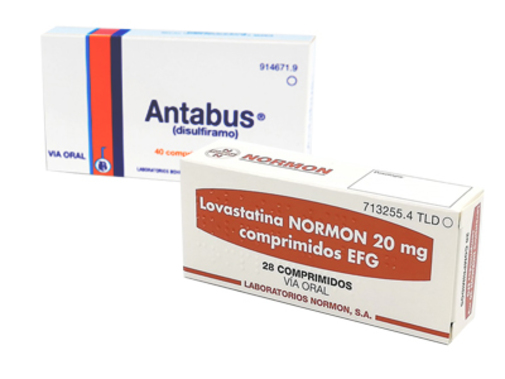- Repositioning Zombie medications arrive
Neither in one nor in two nor in three ... A group of researchers has discovered a surprising ability to kill cancer cells in 49 existing drugs for other diseases such as diabetes or inflammation. Even in a medication to treat arthritis in dogs. This is indicated by an article just published by the journal Nature Cancer.
This is the largest study conducted to date with the express intention of finding new uses for the usual pills. Memorable was, for example, when the benefits of aspirin in the heart were verified or when trying sildenafil for angina pectoris, by chance, the benefits that today name Viagra are identified.
On this occasion, nomenclatures such as disulfiram (for the treatment of chronic alcoholism) and lovastatin (to reduce cholesterol) are postulated as possible options against tumors in the not too distant future . Before, the authors of the work, from the Broad Institute of MIT Massachusetts, United States) stress, "more analysis will have to be done on these 49 non-cancer drugs and then take them to clinical trials to test them in cancer patients."
The researchers tested a total of 4,518 compounds from the Broad Drug Reuse Center on 578 human cancer cell lines . Using a molecular bar code method known as PRISM, which was developed in the Golub laboratory, each cell line could be labeled with a DNA barcode and measure the survival rate of cancer cells.
We thought we would be lucky if we found a single compound with these properties
Todd Golub of the Broad InstituteThe result: neither more nor less than 49 drugs indicated and marketed for other diseases such as diabetes showed a surprising ability to kill cancer cells. That is, they not only work to reduce cholesterol, inflammation or arthritis. They also seem to have anti-tumor potential. "We thought we would be lucky if we found only one compound with these properties," says Todd Golub, scientific director of the work and cancer program at Broad.
Just as most cancer drugs block proteins, Corsello argues, " we are discovering that the compounds can act through other mechanisms such as the activation of a protein or stabilizing the interaction between proteins." However, most of these non-cancer medications showed activity against the tumor when related to a previously unrecognized molecular target. For example, the anti-inflammatory drug Tepoxaline, originally developed for use in people but approved for the treatment of osteoarthritis in dogs, eliminated cancer cells by hitting an unknown target on cells that overexpress MDR1 protein, which commonly boosts resistance to Chemotherapy medications.
In recent years, the search for new indications for already marketed drugs has intensified. On the one hand, times are shortened, since you don't have to develop medicine starting from scratch . It should be remembered that from the discovery of a molecule until its arrival on the market, 10 years can pass. On the other hand, it would mean lower costs. According to the latest data, research and development of a drug involves an investment of more than two billion euros.
In addition, there is now state-of-the-art technology that helps to process and analyze millions and millions of data that in turn connect each other to the target, in this case, finding a new indication for an old medicine. With this objective, "we created the Broad Medication Reuse Center, which now has a warehouse of more than 6,000 compounds approved by the American Medicines Agency (FDA) or which have proven to be safe in clinical trials. "says Steven Corsello, the first signatory of the study and oncologist at the Broad Institute in Cambridge, Massachusetts.
From the discovery of a molecule until its arrival on the market, 10 years can pass
The results of this study "open new doors to analyze many drugs in other models. A cell line is not the same as a person. We will have to study the necessary doses, toxicity, safety ...", points out Enriqueta Felip, vice president of the Spanish Society of Medical Oncology (SEOM) and head of the Medical Oncology Service Section of the Vall d'Hebron University Hospital in Barcelona. Without a doubt, "this group of scientists is very powerful, their work is very extensive and they share it openly. By working with drugs that already exist, we have a lot of cattle."
In addition to these findings, Corsello and his team also revealed new mechanisms and pharmacological objectives, which could accelerate the development of new cancer drugs or reuse existing medications to treat this disease.
For now, researchers will study the compounds in more cancer cell lines and their intention also includes expanding the number of compounds.
According to the criteria of The Trust Project
Know more- Science and Health
Health The military laboratory that Podemos wants to become the pharmaceutical company in Spain
Health A blank night is associated with an increased risk of Alzheimer's
Health Joan Massagué's team opens a path for the treatment of cancer metastasis

